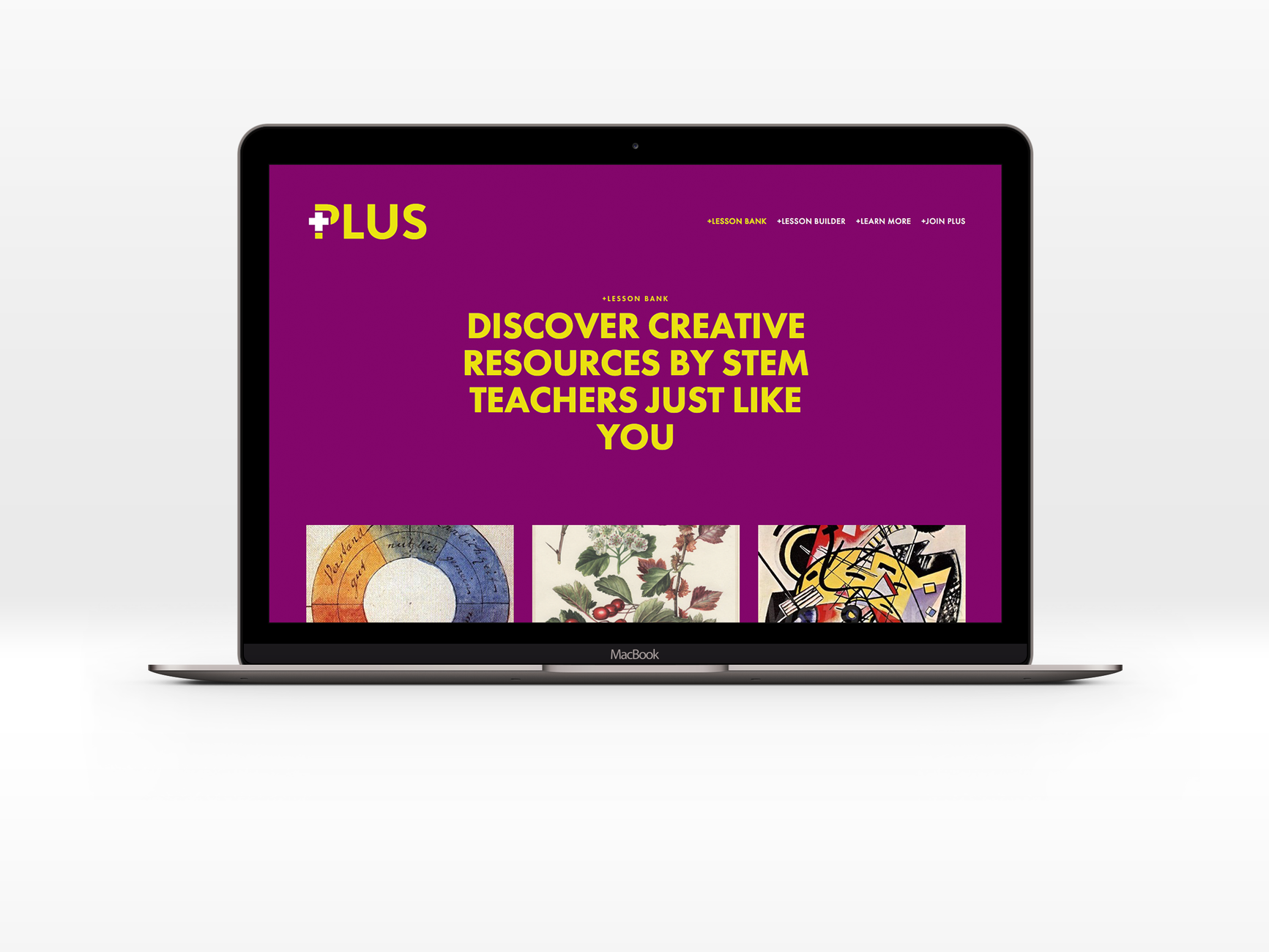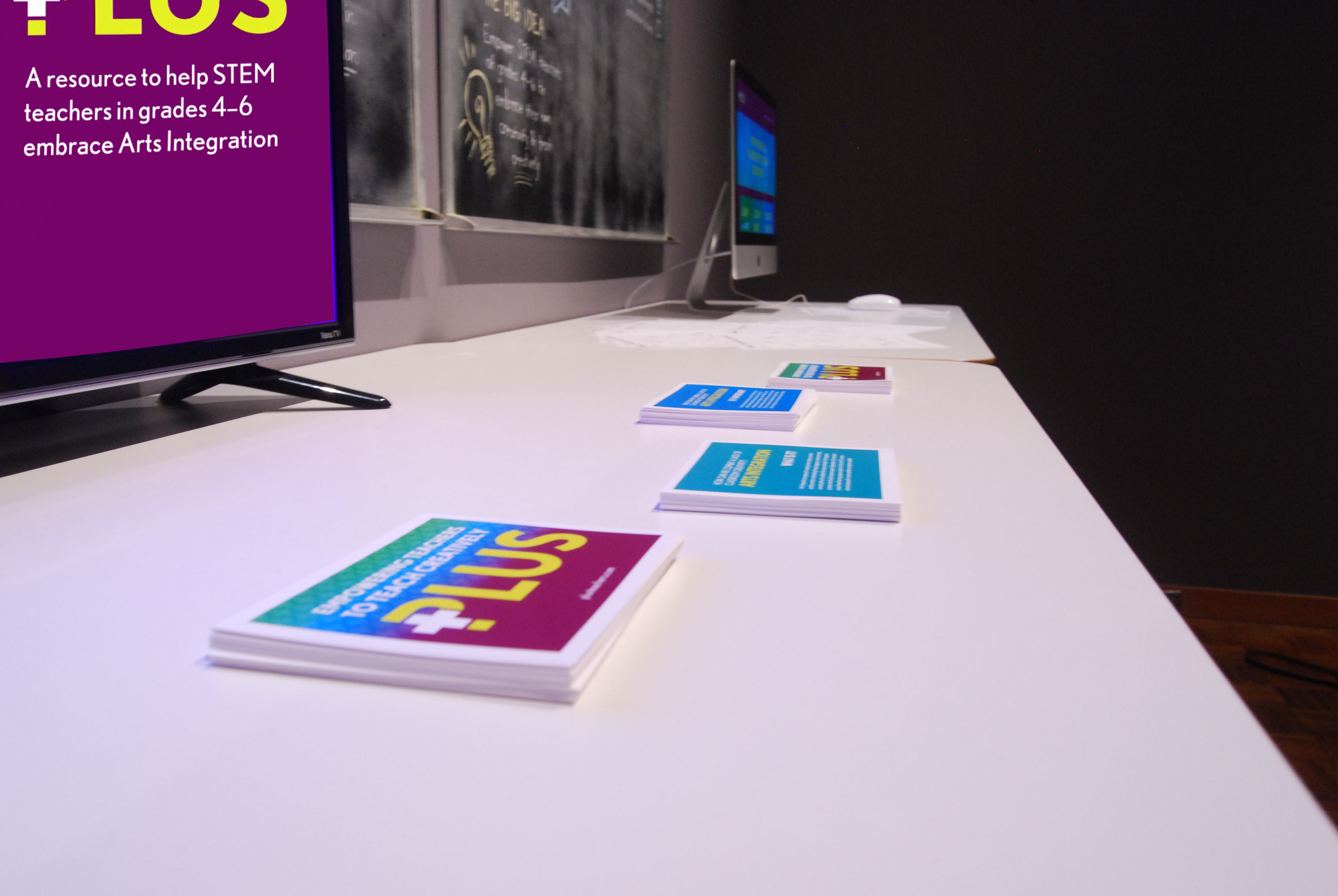Fall 2016–Spring 2017At the University of Notre Dame, all seniors pursuing a Bachelor of Fine Arts must complete a senior thesis project. My project included aspects of web design, motion design, print design, exhibition design, and design for education, showing the myriad of skills I developed during my undergraduate education. Below is a summary of my research and designed components.
PLUS: Empowering Teachers to Teach Creatively
is an online community designed to educate, encourage, and assist STEM teachers in grades 4–6 to incorporate creativity in their classrooms by:
1. Learning more about the importance of arts integration
2. Borrowing successful innovative lesson plans from their peers
3. Planning and sharing their own creative lessons
Setting the Scene:
Creativity is an Essential Skill
Creative thinking is now, more than ever, integral to success in higher education and the workplace. Studies show that creativity is one of the top skills 21st century employers look for in potential hires.
In order for individuals to master creative problem solving, they must be exposed to it from a young age. According to a variety of child and educational psychologists, students in grades 4–6 are at the prime stage of their educational careers and psychological development to be introduced to innovative problem solving. During these years, students shift from learning basic skills through memorization to learning through analysis, critical thinking, and application. Creative thinking and problem solving must be encouraged, fostered, and mastered in grades 4–6 in order to ensure future academic and career success.
Problem: Creativity is Ghettoized in American Schools
In the majority of American schools, creativity is relegated to one arts class once a week. The tools and tactics that encourage creative thinking are not typically integrated into standard curriculum. Due to America’s test-driven educational policy, many teachers struggle to balance high-stakes testing and accountability with the ability to teach flexibly and independently.
Further, many teachers are fearful to integrate the arts and creative thought in their classrooms. This is reported to be particularly true among science, technology, engineering, and math teachers. STEM educators report feeling ill-equipped to teach beyond their subject matter and doubt their own creative problem solving skills. Yet students cannot be expected to master innovative thinking, particularly applied ingenuity, in art classes alone. For students to truly master imaginative problem solving, creativity and the arts must be integrated into traditional subjects, like science and math.
Solution: An Online Community to Empower Educators
Based on extensive research both from primary and secondary sources, it became apparent that if teachers were not confident in their own creativity, they were not likely to teach their students to embrace creativity. Through the development of PLUS, it is my objective to empower STEM teachers in grades 4–6 to incorporate creativity in their classrooms.
This objective is achieved through the design of an online community to help teachers embrace arts integration and grow more confident in their ability to teach creatively. The website, as shown below, functions as a comprehensive resource for teachers to learn more about the importance of arts integration, borrow the successful innovative lesson plans of their peers, and plan and share their own creative lessons.








In addition to designing this online community, I worked with educators to design nine sample lessons. At the completion of my thesis, seven of these lessons were fully conceived, designed, and published to the PLUS website and two were still under revision and review.
Some of these lesson plans required the design of custom worksheets and all lesson plans required the design of custom teacher lesson planning guides. A custom teacher guide (left) and a custom worksheet (right) are shown below for one of PLUS's lessons, Proportions & Color Wheels, which integrates the math concept of fractional and decimal proportions and the fine arts concepts of color wheels and paint mixing.
Presentation and Museum Design:
Exhibition at the Snite Museum of Art
To culminate my research and product development, I designed a museum exhibition. To instantly convey my topic to museum goers, I used the visual language of a classroom in my display. Handlettered chalkboards and standing desks instantly and subliminally conveyed the educational focus of my work. The display included:
vinyl wall title
two handlettered chalkboards explaining my research and product
a motion graphics piece further demonstrating my research and product
a computer for visitors to interact with the online community
printed lesson plans and worksheets for the Proportions & Color Wheels lesson
take-away cards recapping my work
an artist statement
My exhibition was on display in the Snite Museum of Art in South Bend, IN as part of their 2017 BFA/MFA Candidates Thesis Exhibition from April 7–May 21, 2017. Images of my display can be seen below.




















